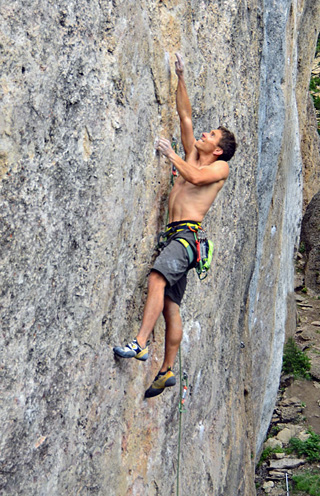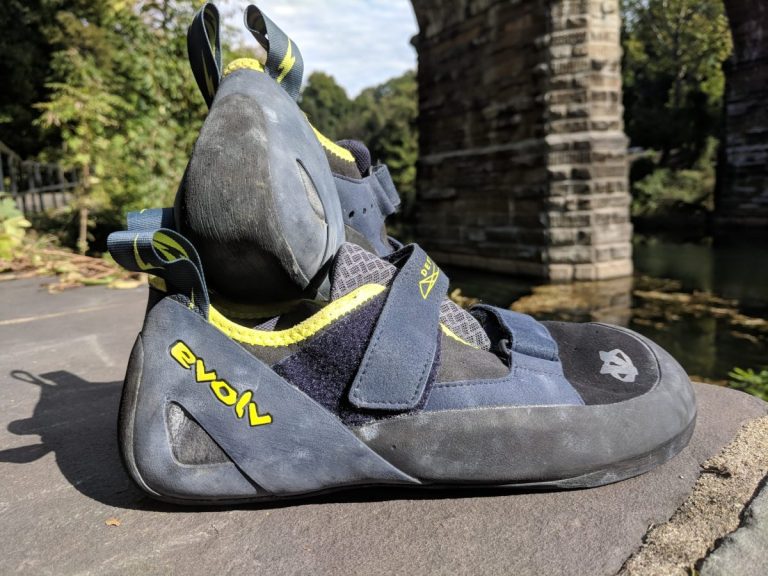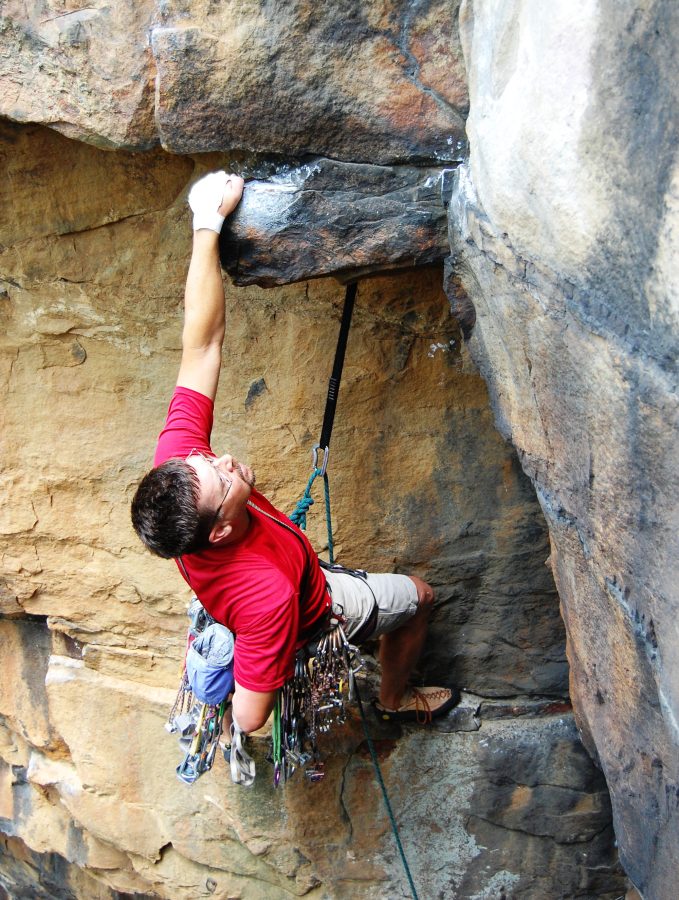Pushing Your Limits in Free Climbing
Free climbing is a challenging sport that requires a lot of physical and mental strength, focus, and endurance. It involves climbing up a vertical surface without any artificial aid or support, such as ropes, harnesses, or anchors. In free climbing, the climber depends entirely on their own strength, skills, and experience to ascend the route. However, free climbing can also be a dangerous sport if not done with caution and preparation. In this article, we will explore the importance of pushing your limits in free climbing, how to do it safely and effectively, and what are the benefits and risks of doing so.
1. Introduction
Free climbing is not only a sport but also a lifestyle and philosophy that values self-reliance, courage, and adventure. Many climbers see free climbing as a way of exploring their limits, both physical and mental, and achieving their fullest potential. However, pushing your limits in free climbing is not a trivial task, as it requires a lot of dedication, discipline, and preparation. In this article, we will guide you through the process of pushing your limits in free climbing, from the mindset to the techniques, and help you understand the benefits and risks of doing so.
2. What is free climbing?
Free climbing is a type of rock climbing that involves ascending a route using only your hands and feet, without any artificial aids or support, such as ropes, harnesses, or anchors. Free climbing is a traditional and pure form of climbing, as it relies entirely on the climber’s strength, skill, and experience to overcome the challenges of the route. Free climbing can be done on different types of rock formations, such as granite, limestone, sandstone, and volcanic rock, and can involve various styles and techniques, such as crack climbing, face climbing, slab climbing, and bouldering. Free climbing can be done solo or in a team, but always requires a high level of safety awareness and respect for the environment.
3. Why push your limits in free climbing?
Pushing your limits in free climbing can be a rewarding and transformative experience, as it allows you to discover your true potential, overcome your fears and doubts, and develop your skills and confidence. By pushing your limits in free climbing, you can also expand your horizons and explore new challenges, both in the climbing world and in your personal life. Pushing your limits in free climbing can also enhance your physical and mental performance, as it requires you to develop strength, endurance, agility, balance, and focus. Furthermore, pushing your limits in free climbing can inspire and motivate others to do the same, and contribute to the growth and development of the climbing community.
4. How to prepare for pushing your limits
Before pushing your limits in free climbing, it is essential to prepare yourself physically, mentally, and technically. Here are some tips on how to do so:
Physical training
- Start with a solid foundation of general fitness, such as cardio, strength, and flexibility training.
- Focus on specific climbing-related exercises, such as finger and grip strength, core stability, and shoulder mobility.
- Gradually increase the intensity and duration of your training sessions, and listen to your body’s signals of fatigue, pain, or injury.
- Rest and recover properly between training sessions, and avoid overtraining or burnout.
Mental training
- Develop a positive and resilient mindset that can handle the challenges and setbacks of free climbing.
- Visualize yourself succeeding in challenging routes, and practice mental rehearsal and self-talk.
- Learn how to control your fear and anxiety, and use them as motivators rather than inhibitors.
- Build your confidence and self-efficacy by setting achievable goals and milestones.
Safety gear and equipment
- Invest in high-quality climbing gear and equipment, such as shoes, chalk bag, harness, helmet, and protection devices.
- Learn how to use and maintain your gear properly, and inspect it regularly for signs of wear or damage.
- Follow the safety guidelines and protocols of free climbing, such as checking the weather, assessing the route, and communicating with your partner or team.
5. Techniques for pushing your limits
Pushing your limits in free climbing requires a combination of physical, mental, and technical skills, as well as a willingness to take calculated risks and learn from your mistakes. Here are some techniques for pushing your limits in free climbing:
Overcoming fear and doubt
- Identify your fears and doubts, and acknowledge them without letting them control you.
- Break down the route into smaller sections, and focus on each move or hold rather than the whole picture.
- Practice falling and taking falls safely, and trust your belayer or safety device.
- Learn from your failures and setbacks, and use them as opportunities for growth and learning.
Visualizing success
- Visualize yourself succeeding in the route, and imagine the sensations, emotions, and actions involved.
- Use positive self-talk and affirmations to reinforce your confidence and motivation.
- Create mental images or videos of the route, and review them before and during the climb.
- Celebrate your successes and achievements, and use them as inspirations for future challenges.
Taking calculated risks
- Assess the risks and benefits of the route, and weigh them against your skills and experience.
- Plan your strategy and tactics for the route, and anticipate potential obstacles or hazards.
- Be flexible and adaptive to changing conditions or unexpected situations.
- Trust your instincts and judgment, but also seek feedback and advice from others.
6. Benefits of pushing your limits in free climbing
Pushing your limits in free climbing can have various benefits, both physical and mental, that can enhance your overall well-being and quality of life. Here are some benefits of pushing your limits in free climbing:
Personal growth and development
- Challenge yourself to new levels of achievement and satisfaction.
- Discover your strengths, weaknesses, and potentials, and develop your self-awareness and self-confidence.
- Cultivate a sense of purpose and meaning, and align your values and goals with your actions and experiences.
- Build resilience, adaptability, and grit, and learn how to cope with uncertainty, stress, and adversity.
Enhanced physical and mental performance
- Improve your strength, endurance, agility, balance, and coordination, and develop a lean and toned physique.
- Boost your cardiovascular health, bone density, and immune system, and reduce your risk of chronic diseases.
- Increase your focus, attention, and concentration, and sharpen your cognitive skills and memory.
- Reduce your stress, anxiety, and depression, and enhance your mood, creativity, and happiness.
Expanded horizons and opportunities
- Explore new places, cultures, and environments, and connect with other climbers and enthusiasts.
- Try different styles and techniques
- Learn new skills and knowledge, such as route finding, gear placement, and anchor building.
- Pursue new challenges and goals, such as multi-pitch climbing, big walls, or alpine climbing.
- Inspire and motivate others, and contribute to the growth and development of the climbing community.
7. Risks of pushing your limits in free climbing
Pushing your limits in free climbing can also involve various risks and hazards, both physical and psychological, that should not be underestimated or ignored. Here are some risks of pushing your limits in free climbing:
Injury or death
- Falls from high heights can lead to serious injuries or death, even with proper safety gear and equipment.
- Overuse or misuse of muscles, joints, and bones can cause strains, sprains, fractures, or chronic pain.
- Exposure to extreme weather conditions, such as heat, cold, wind, or precipitation, can lead to hypothermia, hyperthermia, or dehydration.
- Encounters with wildlife or natural hazards, such as loose rock, avalanches, or lightning, can pose additional risks.
Burnout or fatigue
- Pushing yourself too hard or too often can lead to physical or mental exhaustion, burnout, or depression.
- Neglecting your rest, recovery, and nutrition can impair your performance, motivation, and health.
- Ignoring your body’s signals of fatigue, pain, or injury can lead to further damage or complications.
Psychological stress or trauma
- Fear, anxiety, and doubt can be intense and overwhelming, and can affect your performance and safety.
- Traumatic experiences, such as accidents, injuries, or near-death situations, can lead to post-traumatic stress disorder (PTSD) or other mental health issues.
- Pressure from peers, sponsors, or media can create unrealistic expectations or standards, and compromise your values or ethics.
- Comparison with others or oneself can lead to envy, jealousy, or self-doubt, and undermine your confidence or self-esteem.
8. Conclusion
Pushing your limits in free climbing can be a thrilling and rewarding experience, but also a challenging and risky one. To do so safely and effectively, you need to prepare yourself physically, mentally, and technically, and adopt a positive and resilient mindset. You also need to be aware of the benefits and risks of pushing your limits, and learn how to balance them with your values, goals, and priorities. By pushing your limits in free climbing, you can not only achieve your fullest potential but also contribute to the growth and development of the climbing community.
9. FAQs
- Is free climbing more dangerous than other types of climbing?
- Free climbing is considered to be more dangerous than other types of climbing, such as top-roping or sport climbing, because it involves greater risks of falls and injuries.
- Do I need special gear for free climbing?
- Yes, you need specialized gear and equipment for free climbing, such as climbing shoes, chalk bag, harness, helmet, and protection devices.
- How can I improve my mental toughness in free climbing?
- You can improve your mental toughness in free climbing by practicing visualization, self-talk, goal-setting, and positive reinforcement.
- Can I push my limits in free climbing without a partner or team?
- It is not recommended to push your limits in free climbing without a partner or team, as the risks of falls and injuries are higher, and the consequences can be severe.
- How can I recover from injuries or burnout in free climbing?
- You can recover from injuries or burnout in free climbing by seeking professional medical or psychological help, taking a break from climbing, and gradually returning to training
- How can I prevent accidents or injuries in free climbing?
- You can prevent accidents or injuries in free climbing by following the safety guidelines and protocols, such as checking the weather, assessing the route, using proper gear and equipment, and communicating with your partner or team.
- What are some common mistakes to avoid in free climbing?
- Some common mistakes to avoid in free climbing include overestimating your skills or experience, underestimating the risks or challenges of the route, neglecting your safety or your partner’s, and ignoring the environmental or ethical considerations.
- How can I overcome my fear of falling in free climbing?
- You can overcome your fear of falling in free climbing by practicing falling techniques in a controlled and safe environment, trusting your gear and your partner, and gradually increasing the height and difficulty of the route.
- Can pushing my limits in free climbing have a negative impact on my life outside of climbing?
- It depends on how you balance your priorities and values, and how you manage your time and energy. Pushing your limits in free climbing can have a positive impact on your personal growth and development, but it can also create stress or conflicts with your other commitments or relationships. It’s important to be aware of your limits and needs, and to communicate them effectively with others.


